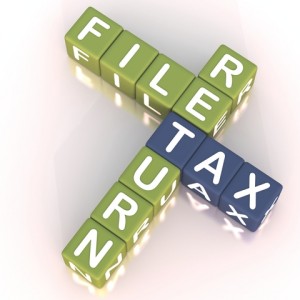 The new year is now well underway, which can mean only one thing for self-employed small (and medium-sized) business owners; it’s time to finally get around to submitting your self-assessment tax return.
The new year is now well underway, which can mean only one thing for self-employed small (and medium-sized) business owners; it’s time to finally get around to submitting your self-assessment tax return.
Your 2013-14 self-assessment tax return is due at midnight on 31 January 2015, as is your final payment of any tax due.
There are dozens of ways to save money on your tax return year after year; some of the most rewarding of which are summarised below:
Maximise Your Tax-Free Personal Allowance
If you’re married or in a civil partnership you can maximise your joint tax-free personal allowances by transferring income between each other so to ensure neither of your personal allowances go unused.
Your personal allowance for the current tax year (2014-15) is set at £10,000, meaning should your spouse earn less than £10,000 a year, they can transfer the unused portion of their personal allowance to you, allowing you to benefit from a slight tax break on this amount.
Use Your ISA Allowance
In the last twelve months Individual Savings Accounts (ISAs) have been completely transformed.
Whereas before you could only use half of your tax-free ISA allowance as a cash investment (the other half having to be placed into stocks and shares), under the new rules you can save up to £15,000 into your ISA each year, with a choice as to whether you want the full amount to consist of cash, stocks and shares, or a combination of both.
Invest In a Pension Scheme
Investing into a personal pension scheme (or one organised by your place of work) allows you to save money on your tax return by way of tax relief of up to £40,000 a year.
It’s possible to opt to push forward your allowance for up to three years, an option that’s of considerable use should you currently not wish to invest into a scheme for whatever reason, but you’re confident you’ll wish to do so in a few years from now. If you do have the money to invest now, however, you’re encouraged to make the investment (and benefit from the tax relief) immediately.
Use Your Capital Gains Tax Exemption
Chances are you won’t need to think twice about your Capital Gains Tax (CGT) exemption limit if you’re not planning on selling assets of particular significance (and expense).
If you do choose to sell such an asset, however, you can make best use of your Capital Gains Tax exemption limit (set at £11,000 for 2014-15) by transferring certain assets to your partner (or becoming joint-owners) ahead of selling it on.
Maximise Your Annual Investment Allowance
The Government has been increasing and decreasing the Annual Investment Allowance (AIA) for years now, with the most recent increase; from £250,000 to £500,000 in place until 31 December 2015.
Designed to stimulate business investment across the economy, this allowance can be deducted from your taxable profits. According to Chancellor of the Exchequer George Osborne, “99.8% of businesses will get a 100% investment allowance… [meaning] almost every business across Britain will pay no upfront tax when they invest in the future.”
Place Investment Capital in EIS/SEIS Schemes
If you’ve not done so already, placing investment capital into the Enterprise Investment Scheme (EIS) and Seed Enterprise Investment Scheme (SEIS) allows you to receive healthy tax reliefs while helping small business owners across the country.
Investors in the EIS should expect to receive up to 30% tax relief on income tax, Capital Gains Tax, and inheritance tax. Investors in the SEIS have the potential to receive up to 78% in tax relief (50% income tax relief on invested funds, and 28% Capital Gains Tax relief).
Claim for Capital Losses
You can claim for capital losses by carrying them forward into the next tax year, and therefore reducing your Capital Gains Tax over time. These losses will be offset against your profits from the same trade.
You may also claim for capital losses by carrying back any trading losses; offsetting them against other income in the year. Unlike carrying your loss forward, however, which happens without any input from you, carrying back trading losses is a fairly complicated process and you’re therefore encouraged to speak with your accountant before carrying them back.
Maximise Your Wear and Tear Allowance
If you rent furnished properties you’re legally within your right to claim a wear and tear allowance each year, an allowance (currently set at 10% of the relevant rental amount) that allows you to offset some of the ongoing costs that come with renting such properties; with the allowance directly reducing your taxable rent.
Call Us to Save Money on Your Self-Assessment Tax Return
To speak with a professional to discuss how you can save money on your self-assessment tax return, contact us today on 020 7129 1199 or get in touch with us via our contact page to arrange a complimentary, no obligation meeting.
